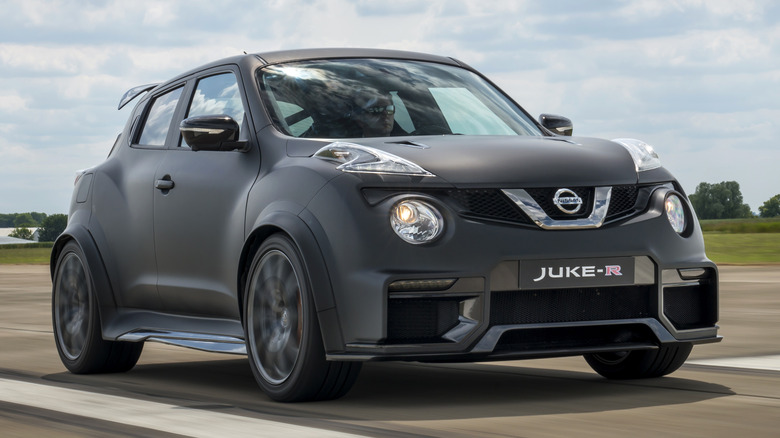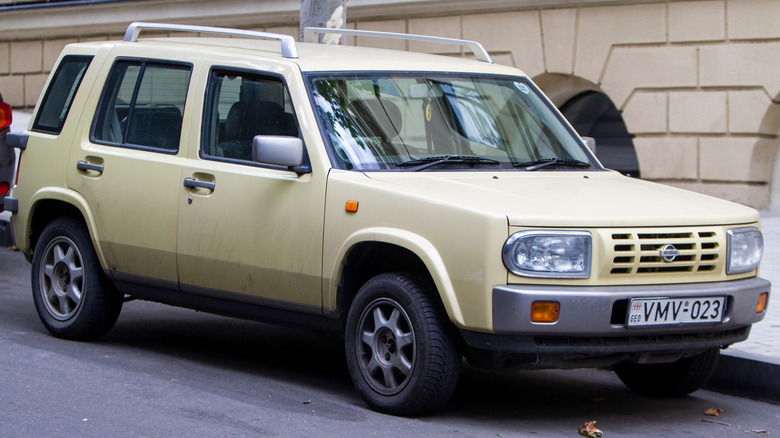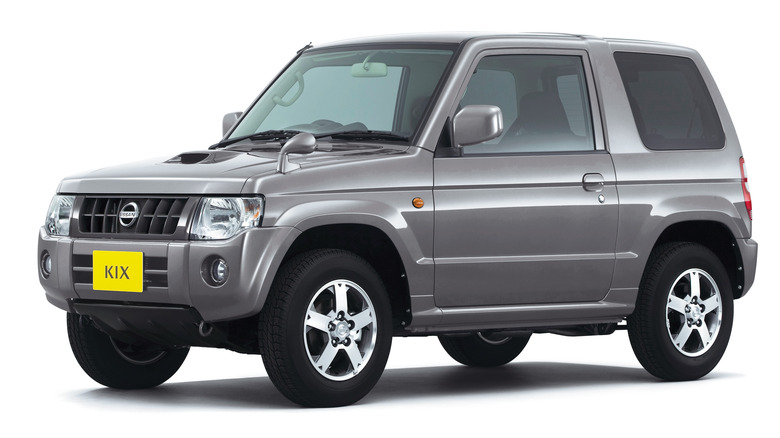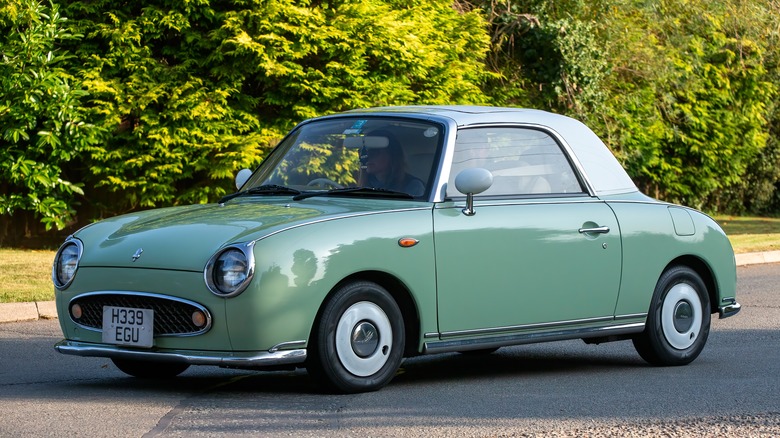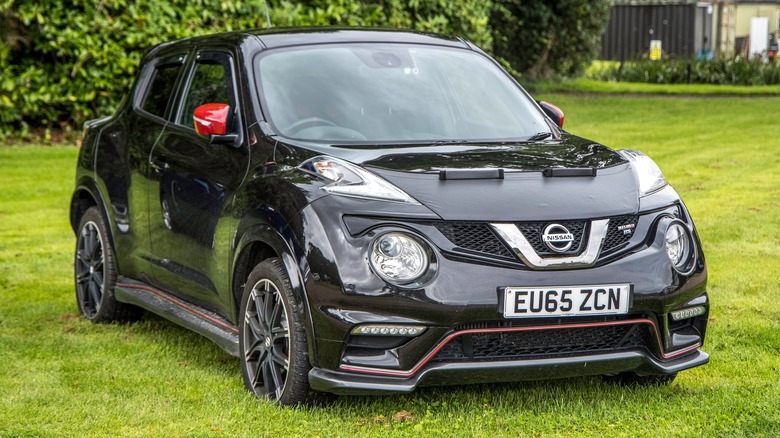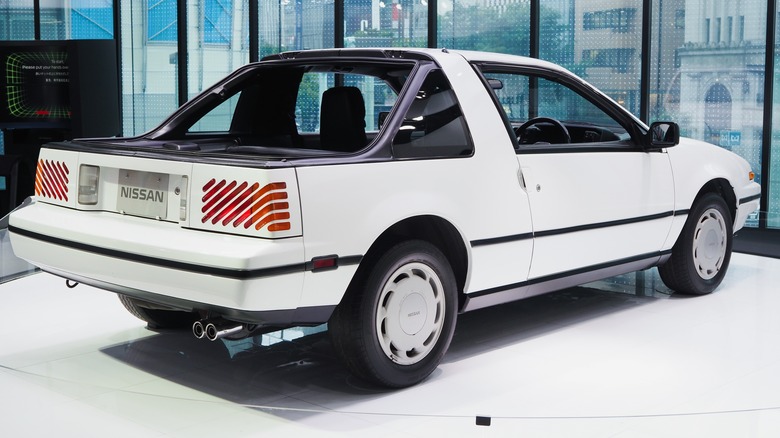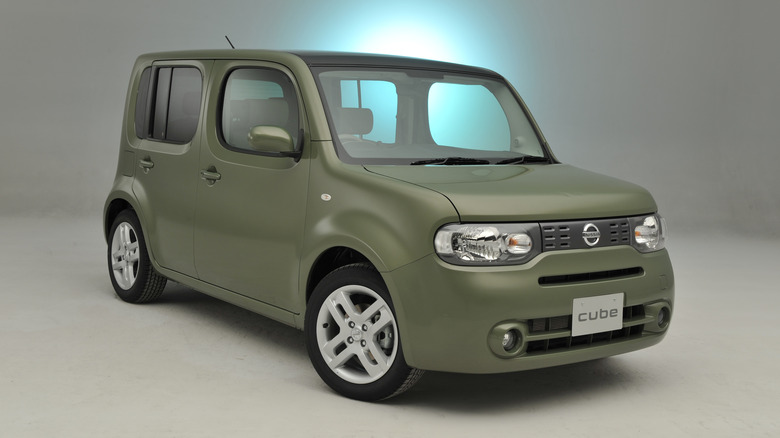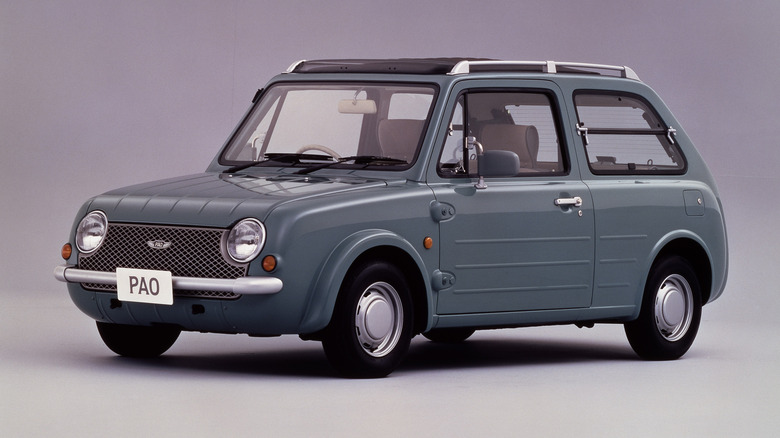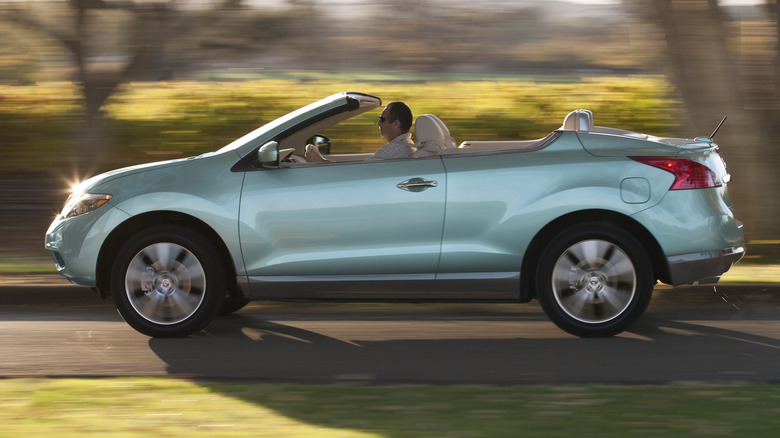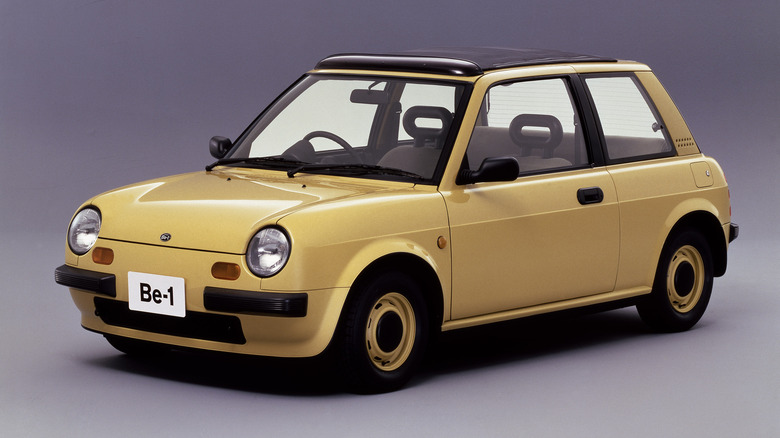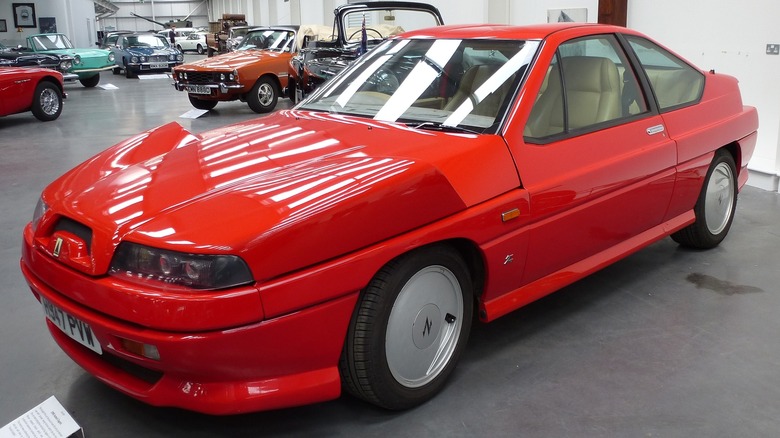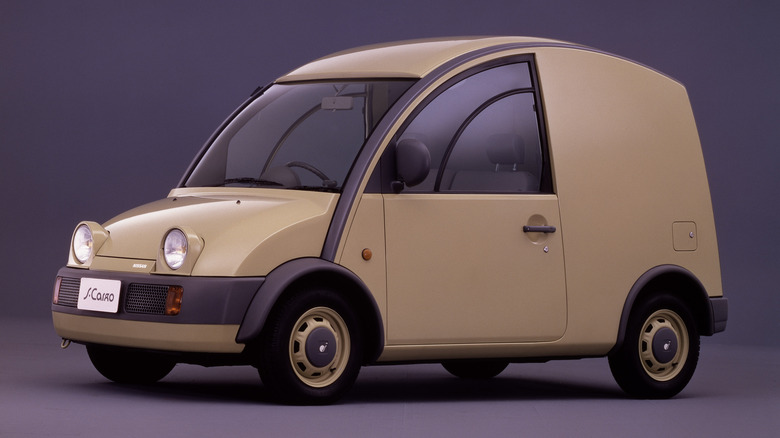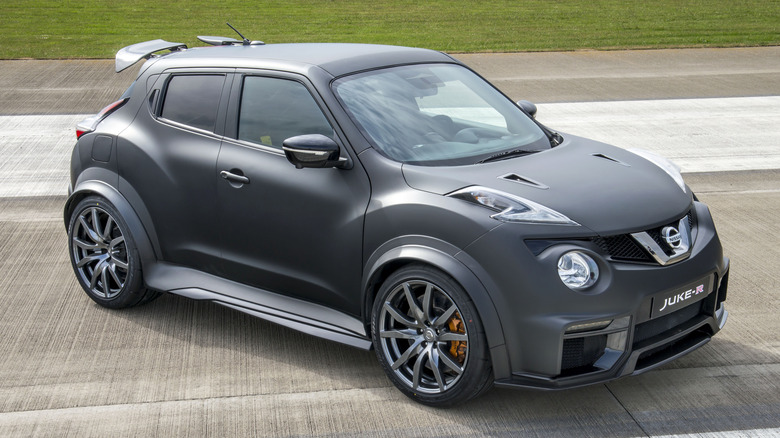12 Of The Strangest Nissans Ever Built, Ranked
Nissan built its reputation by making reliable, affordable cars and churning them out by the millions. Its legendary Skyline GT-R and Z lines helped revolutionize their respective segments and continue to be extremely popular with enthusiasts today, but Nissan as a whole was never much of a risk-taking brand. Rather, it was most concerned with making safe, sensible cars, and making them well. Despite that tendency to stick with what works, the brand has occasionally surprised everyone by making something that's completely out of character.
Whether it's a shrunken 4x4 or an Italian-styled luxury car with a price on par with Italian exotics of its era, Nissan's back catalog of weird and wonderful models shouldn't be ignored. Rather, it should be celebrated, as many of its strangest models boast the most dedicated fanbases today. These twelve are among the brand's most unusual cars to date, with some being revered cult classics and others being largely forgotten oddities that can be picked up for peanuts.
12. Nissan Rasheen
While it's certainly one of the stranger cars to emerge from Nissan's production line, SlashGear has previously argued that the Nissan Rasheen was ahead of its time. It was first launched in Japan for the 1994 model year and was a precursor to the off-road inspired crossovers that are commonplace today. Like most of those crossovers, the actual all-terrain capabilities of the Rasheen were limited, although it did at least feature four-wheel-drive. The base model featured a modest 1.5L engine producing around 100 horsepower, but a limited edition version of the car called the Rasheen Forza was offered with Nissan's 2.0L SR20DE engine.
Its styling took inspiration from old-school SUVs, but transplanted those looks onto the platform and footprint of a city car. Like many of Nissan's most unusual creations, the Rasheen was only ever officially sold in Japan. It remained in production until 2000, with over 70,000 examples sold in the country during its lifespan. Thanks to its unique looks and practicality, it retains a fanbase in Japan today, and over the years, a small number of examples have also been exported to other right-hand drive markets including the UK.
11. Nissan Kix
Not to be confused with the Nissan Kicks, an affordable crossover that's currently offered in the brand's North American lineup, the Kix was a Japan-only special that was essentially a rebadged Mitsubishi Pajero Mini. That was, in turn, a shrunken version of the Mitsubishi Pajero/Montero, which carried over some of its namesake's styling and all-terrain capability but came with a much smaller footprint. The Kix gave the Pajero Mini a new face but was otherwise largely the same car underneath.
Nissan reportedly aimed the car at male buyers in late middle age, and hoped to sell around 300 examples per month. It launched in 2008 and remained on sale until the Pajero Mini was discontinued in 2012. Being a miniaturized version of a popular off-roader might make the Pajero Mini — and subsequently the Kix — inherently odd, but they found plenty of fans in Japan. There were even rumors in 2022 that the Mitsubishi-badged version of the car might make a return, but so far, no new generation has been confirmed.
10. Nissan Figaro
The last official car to emerge from Nissan's quirky Pike Factory division, the Figaro is arguably the least strange of all of them. That said, it's still unusual enough to feature here — other Pike cars just end up ranked higher. Launched in 1991, its retro looks hid a modern powertrain underneath. It was based on the Micra/March city car, sharing its 1.0L engine and making the Figaro slightly less sluggish around town than its styling might initially imply. Only slightly, however — it's still slow by today's standards, even if it was acceptable for Japanese consumers back then.
All of the Pike Factory cars were only officially sold in Japan, with the Figaro's production run limited to 20,000 units, making it one of the division's more widely produced models. It remains a cult classic there in its home country thanks to its 1930s-influenced looks, but it has also gained popularity in the UK, where over 6,000 examples now reportedly reside.
9. Nissan Juke Nismo RS
Many enthusiasts would expect that any Nissan wearing the "Nismo RS" moniker represents the cutting edge of the brand's performance roster, but those enthusiasts clearly haven't seen the Nissan Juke Nismo RS. The hot version of Nissan's polarizing Juke crossover gets a body kit, red accents, and a power boost to 215 horsepower. That's more than double the power of a base Juke, but still a way off from what the best hot hatches on the market offered at the time. Likewise, the car gets a handling setup designed by Nismo's engineers, but it's not enough to escape the fact that this is at the end of the day still a compact crossover.
The idea of a hotter Juke is in itself pretty strange, but the Juke Nismo RS' confusing execution makes it even stranger. Nissan had a range of small hatchbacks that made more natural candidates for hot hatch treatment, so why it chose to prioritize the Juke is anyone's guess.
8. Nissan Pulsar Sportbak
Most car buyers have to choose whether to get a sports car, pickup truck, coupe, or wagon before they jump in and buy one, but Nissan's Pulsar Sportbak let them pick later. That's because the car featured a modular roof system that enabled it to be all of those things at once. Assuming they had bought every roof option, the car could be fitted with a closed roof to turn it into a coupe, a raised roof to turn it into a wagon, or targa panels to turn it into a T-top convertible.
With the roof off, it functioned as a kind of compact pickup truck. The car was sold in America from 1986 to 1990, and examples can still be found on the used market. While it's certainly one of Nissan's most unique cars — and one of its strangest — the idea of the modular roof is not an entirely original one. The Ford Ghia Prima concept debuted with a similar system back in 1976, but although the concept was fully functional, it didn't lead to a production version.
7. Nissan Cube
One of the best known weird Nissans is the Cube, which was unveiled in first-generation form in Japan in 1998 and then given a second generation in 2002. The third generation arrived for 2009, by which time the unusual looking car had become so popular that Nissan began offering it in select overseas markets as well as continuing to offer it in Japan. Each generation grew weirder in its appearance, but this was intentional. In fact, Nissan's design team referred to the third generation car as looking like a "bulldog in sunglasses."
Markets like Australia continued to receive gray imports of the Cube long after the globally homologated model was discontinued, with the oddball car exiting the North American market after 2014 because of slowing demand. Nissan continued to produce the car for the Japanese market until 2019, but after a drop in interest from domestic buyers, eventually discontinued it without a direct successor.
6. Nissan Pao
Another of Nissan's Pike Factory cars, the Pao entered production in 1989 and proved to be so popular that around 30,000 examples of the car were built. With its small 1.0L engine making a modest 52 horsepower, the Pao wasn't a car built to go anywhere fast, but it would certainly draw plenty of attention while it was making the journey. Like the other Pike cars, the Pao was a hit in Japan, and in the years since it has become old enough to be imported under the 25 year rule, it's become a cult hit in America too.
Values for North American import examples of the car have increased in recent years, and elsewhere the car remains just as popular. The Pao's unique styling holds a charm that no modern car has managed to match, and so despite the inherent strangeness of a modern city car masquerading as a cutesy classic, it remains a sought-after collectors' item.
5. Nissan Murano CrossCabriolet
The Pao is strange because there's little reason for it to exist in the first place, but its popularity stems from the fact that it was designed that way. It was always intended to be simply a fun niche car catered towards enthusiasts, rather than a sincere attempt at creating a new market segment. The Nissan Murano CrossCabriolet veered more towards the latter camp — it seems Nissan really did think it was onto something when it launched a convertible high-riding crossover.
Evidently, it wasn't, as the car never sold well and was unceremoniously axed from the brand's lineup after just a few years on sale. The weird drop-top arrived in dealerships in 2011, but by 2014, it was history. While giving buyers the best of two segments might have seemed like a good idea in theory, in practice the Murano CrossCabriolet was an awkward hybrid that was too impractical for crossover buyers and too bloated for convertible buyers. Nissan deserves some credit for trying new things with the Murano CrossCabriolet, but unfortunately it was a swing and a miss for the automaker.
4. Nissan Be-1
The original model to emerge from the Nissan Pike Factory was the Be-1, which launched in 1987. According to Nissan, it was designed as a "Coziness-oriented Car" with its styling taking influence from the original iteration of the March/Micra. Nissan wasn't expecting the car to be such a hit, and limited the car's order books to a maximum of 10,000 examples. More than 10,000 orders were taken before a single example of the car had even reached customers, so in order to decide who received the car, the automaker had to set up a lottery system.
Yellow is the most popular color for the Be-1, but three more colors were reportedly offered on the car: blue, red, and white. It was the Be-1's success that paved the way for the following Pike Factory cars to be launched, and it remains a cult collectors' car today, with examples found in various export markets around the world as well as remaining under the care of enthusiasts in Japan.
3. Autech Zagato Stelvio AZ-1
A product of the peak of the Japanese bubble era, the Autech Zagato Stelvio AZ-1 was Nissan at its least rational. It enlisted Zagato to create a design that remains a real head-turner today, even in a crowd of vastly more expensive cars. Then, through its Autech tuning division, it took a 3.0L V6 engine and boosted its power to an official rating of 280 horsepower. Its true horsepower was thought to be higher, but the gentleman's agreement between Japanese automakers prevented Nissan from disclosing its realistic output.
Then, it took the chassis and internals of the Nissan Leopard, sold in America as the Infiniti M30, and grafted the whole concoction into one finished vehicle. The result is a car that's exceedingly rare, with only 100 or so examples thought to have been finished. It's also exceedingly odd to look at, with its angles and bulges making it strange even by Zagato standards. Despite its rarity and high asking price at launch, the car remains a relatively forgotten classic today, with prices for the car remaining on par with the average new family car.
[Featured image by Buch-t via Wikimedia Commons | Cropped and scaled | CC BY 3.0]
2. Nissan S-Cargo
At the same time Nissan was churning out high-end, Italian-styled specials in the form of the Autech Zagato Stelvio AZ-1, it was also making snail-themed vans from its Pike Factory division. The S-Cargo — a play on the French word for snail — was built in 1989, and was the only commercial vehicle to emerge from the Pike division. It was said to be inspired by the Citroen 2CV delivery van, and featured extras like a removable sushi tray and snail-themed floor mats.
However, it was more than simply a quirky design. The unusual shape made it a surprisingly practical cargo van despite its small size, while the flat sides made it excellent for mobile advertising. As a result, the van remains popular with both enthusiasts and those looking for a unique way to advertise a small business. Some have even been converted into miniature coffee vans, complete with built-in coffee machines that are operated via the rear hatch.
1. Nissan Juke-R 2.0
As a marketing stunt in 2011, Nissan decided to fit its Juke crossover with the 3.8L V6 engine from its GT-R supercar. It went down well — so well, in fact, that Nissan decided to create a new version of the car in 2015, dubbed the Juke-R 2.0. The second time around, the car featured a whopping 600 horsepower, and thanks to some clever engineering, it was surprisingly capable around a track. It was road legal too, and so could in theory be used for typical crossover duties as well as hunting apexes on the weekends.
While the Juke-R 2.0 was initially envisioned as a one-off, it wouldn't end up that way. Several wealthy buyers took an interest in the car and requested their own, and Nissan obliged. The price for each example was reportedly north of half a million dollars. A total of four official examples of the car were built, with a fifth unofficial example constructed by an English motorsports specialist using genuine parts. With its eye-watering price, weird looks, and eyebrow-raising performance, the Juke-R 2.0 is undoubtedly the weirdest Nissan to make it into the hands of customers to date.
